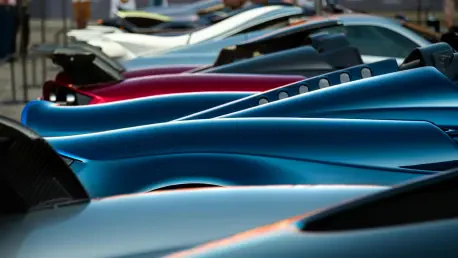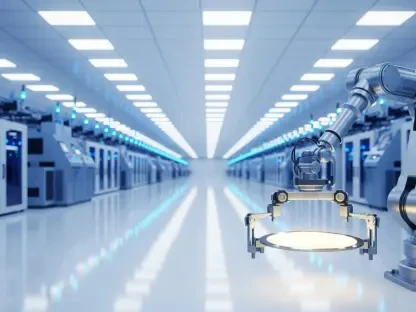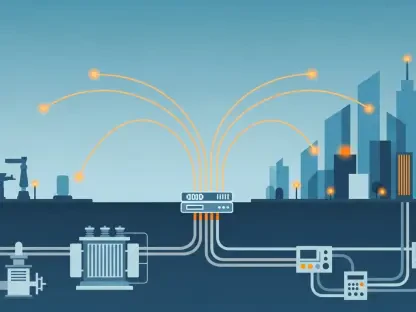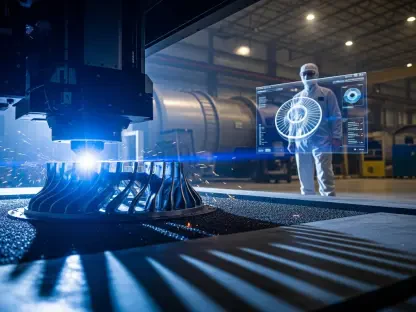In an era where the convergence of high-performance motorsport technology and mainstream automotive design is becoming increasingly prevalent, an exciting collaboration has emerged between Conflux and Donkervoort. They have developed a Formula 1-grade air cooler specifically for the P24 RS supercar. This innovative advancement marks a significant milestone, leveraging cutting-edge additive manufacturing techniques to enhance the performance and efficiency of vehicles in the realm of high-speed driving. The joint effort signifies not only a remarkable engineering accomplishment but also a potentially transformative shift in how automotive components are designed and manufactured today.
The Power of Collaboration
Forging New Partnerships in Automotive Innovation
The collaboration between Conflux and Donkervoort exemplifies the power of combining expertise from disparate fields to push the boundaries of automotive engineering. Conflux, known for its pioneering work in additive manufacturing, brings to the table a wealth of experience in creating intricate and efficient components. Their focus on developing air-cooler technology aligns well with the needs of high-performance vehicles. Meanwhile, Donkervoort, with its reputation for crafting unique and highly capable supercars, provides a perfect platform to test and implement these advancements. This alliance is characterized by a shared commitment to performance, innovation, and sustainability as both companies strive to bring Formula 1-grade technology to the forefront of consumer automotive markets.
Merging High-Tech Elements to Achieve Automotive Excellence
Through this partnership, the intricate technological messages of additive manufacturing and high-speed automotive design are effectively intertwined. Additive manufacturing allows for the creation of components with complex geometries that were previously unattainable using traditional methods. This capability is crucial for enhancing the cooling system’s efficiency by optimizing air intake and temperature regulation, thus directly boosting engine performance. The use of cutting-edge materials and design principles borrowed from F1 technology positions the air cooler as a revolutionary component within the P24 RS supercar, setting new standards for what is possible in production vehicles.
Advanced Manufacturing Techniques
Additive Manufacturing as a Catalyst for Innovation
The heart of this innovative project lies in the utilization of additive manufacturing, which is more commonly known as 3D printing. This technology serves as a catalyst for significant advancements by allowing precise control over the creation of new components. It enables the crafting of lightweight, durable, and highly efficient parts that contribute to improved vehicle performance. Additive manufacturing is particularly beneficial in crafting intricate designs that optimize airflow within critical vehicle systems. These bespoke designs ensure that cooling efficiency is maximized while maintaining a lightweight structure, a necessity for high-performance vehicles like the P24 RS.
Pioneering Customized and Efficient Solutions
Beyond enhancing performance, the use of additive manufacturing heralds a transformation towards more personalized and customized vehicle components. This approach not only increases performance metrics but also aligns with broader industry trends of sustainability and efficiency. By enabling the production of components that are specifically designed to meet the unique demands of a supercar engine, manufacturers can significantly reduce environmental impact through better resource utilization and reduced emissions. This process sets a benchmark for future innovations, where customized solutions are integrated seamlessly into consumer vehicles, enhancing both performance and environmental stewardship.
Performance and Efficiency in Focus
Optimizing Vehicle Performance with F1 Technology
At the core of this innovative development is the pursuit of optimized vehicle performance, a goal that is closely linked to the deployment of F1-level technologies. The air cooler, crafted using additive manufacturing techniques, is designed to operate efficiently even under the extreme conditions that supercars often encounter. By improving air intake and managing temperature regulation more effectively, the air cooler directly enhances engine performance, contributing to the overall speed and responsiveness of the vehicle. This technology integration underscores a commitment to pushing the boundaries of what production cars can achieve, bringing them closer to the performance levels found in professional motorsport.
Addressing the Challenges of High-Performance Automotive Design
Supercars, by design, often face unique challenges related to heat management and performance consistency. The integration of an air cooler that employs F1-grade technology represents significant progress in overcoming these hurdles. By ensuring enhanced cooling efficiency, the risks associated with overheating and performance degradation are minimized. This innovation not only extends the lifespan of the vehicle’s engine but also opens doors for future developments in supercar design that prioritize both performance and reliability. The successful implementation of such technology is indicative of a broader trend towards creating vehicles that are as reliable as they are fast, a harmony of attributes essential for the future of the automotive industry.
Broader Industry Implications
Driving a Trend Towards High-Performance, Sustainable Solutions
The implications of the Conflux and Donkervoort collaboration extend far beyond the production lines of supercars. This initiative reflects a growing trend in the automotive industry, where advanced technologies derived from motorsport are being integrated into everyday consumer vehicles. The focus on improving performance while maintaining sustainability aligns with the industry’s broader goals of reducing emissions and enhancing fuel efficiency. By setting a precedent for the integration of advanced manufacturing techniques and high-performance components, the automotive industry is on the brink of a new era, where innovation and environmental consciousness go hand in hand.
Paving the Way for Future Innovations
This collaboration could serve as a catalyst for similar initiatives across the automotive sector, encouraging more manufacturers to explore the possibilities offered by additive manufacturing and F1 technology. The success of the air cooler development demonstrates the potential for these methods to redefine how vehicles are designed, manufactured, and perform. As the trend gains momentum, it is expected that the efficiency and environmental benefits of such technologies will become more pronounced, prompting broader adoption across the industry. Ultimately, the foundation laid by Conflux and Donkervoort may lead to a future where advanced technological integration is standard, not exceptional, in vehicle design.
Conclusion: A Path Forward for Automotive Excellence
In today’s world, where the fusion of high-performance motorsport technology with mainstream automotive design is rapidly advancing, a notable collaboration has taken shape between Conflux and Donkervoort. Together, they have crafted a Formula 1-standard air cooler for the P24 RS supercar. This innovative development marks a significant leap forward, leveraging state-of-the-art additive manufacturing techniques to boost the efficiency and performance of vehicles designed for high-speed driving. This partnership is not merely an engineering feat but potentially signals a transformative change in the way automotive components are conceived and produced today.
The significance of this achievement lies in its ability to merge the complex, precision-focused world of Formula 1 technology with everyday automotive applications. By utilizing advanced manufacturing processes like 3D printing, this collaboration demonstrates how cutting-edge innovations can be implemented to enhance vehicle performance while also opening new avenues for design flexibility. This breakthrough may pave the way for further integration of performance-oriented technologies into mainstream automotive products, heralding a new era where every consumer can benefit from the sophistication once reserved for elite motor racing. As such, this development underscores a promising future for automotive engineering, reflecting the relentless pursuit of excellence and efficiency in the automotive industry.









